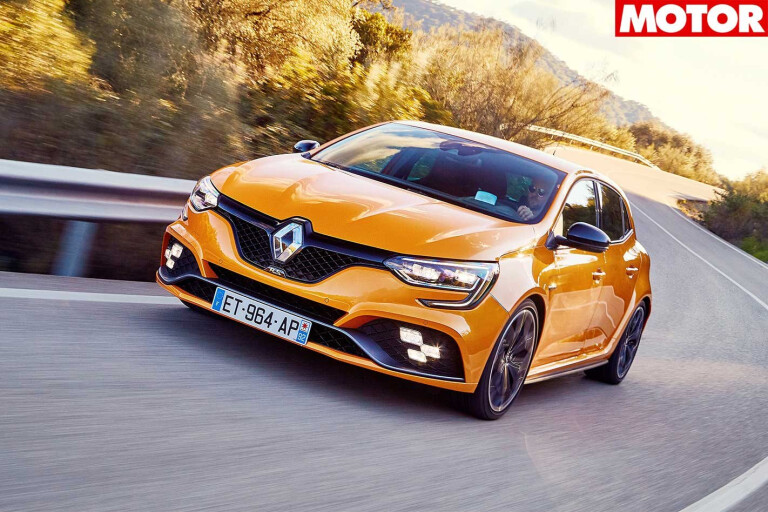
Few performance cars have been lavished with a more consistent tide of praise by hot hatchback aficionados than the Renault Megane RS.
This car has been the go-to fast front-driver for most of its life, having appeared with that memorable ‘bustle-back’ styling in 2004 and promptly set new class benchmarks for driver involvement and handling poise.
However, it’ll take brilliance to reclaim that mantle with the likes of the PCOTY-winning Honda Civic Type R and the all-wheel drive Ford Focus RS as rivals. For that reason and others, you could call the launch of this new Megane RS something of a watershed moment.
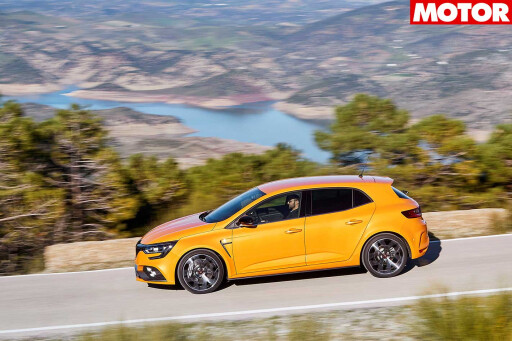 Can the firm that brought us the flawed Clio RS 200 rediscover its sparkling form? Whatever it was that made so many of its hot hatchbacks so good for so long – has Dieppe still got it, or is it lost forever?
Can the firm that brought us the flawed Clio RS 200 rediscover its sparkling form? Whatever it was that made so many of its hot hatchbacks so good for so long – has Dieppe still got it, or is it lost forever?
Meanwhile, has Group Renault’s Alpine A110 sports car, brilliant as it may be, swallowed up so much valuable engineering attention and resource that what could be considered Renault Sport’s most important model has been left undernourished? It’d be understandable. But forgiveable? I’m not so sure.
Some good news would definitely be welcome – and maybe we’re about to get some. Although it retains front-wheel drive, the fast Megane has been through an overhaul that would seem every bit as thorough and attentive, on paper, as that of any of its rivals.
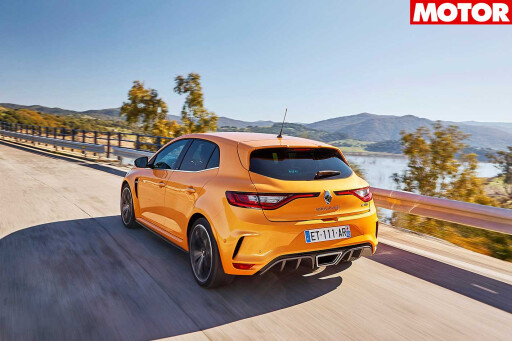 It has a new 1.8-litre turbocharged engine that’s smaller and lighter than the old car’s 2.0-litre, yet delivers more power and torque than what the Megane 275 bowed out with – and it can be partnered with a choice of six-speed manual or dual-clutch automatic gearboxes. Unlike in the Clio RS 220 Trophy, then, you needn’t be stuck with two pedals and two paddles if you don’t want them. See, told you there was good news.
It has a new 1.8-litre turbocharged engine that’s smaller and lighter than the old car’s 2.0-litre, yet delivers more power and torque than what the Megane 275 bowed out with – and it can be partnered with a choice of six-speed manual or dual-clutch automatic gearboxes. Unlike in the Clio RS 220 Trophy, then, you needn’t be stuck with two pedals and two paddles if you don’t want them. See, told you there was good news.
For suspension, the Megane RS sticks with struts up front and a torsion beam at the rear, but its front configuration has new geometry and retains Renault Sport’s PerfoHub, which reduces kingpin angle offset and therefore better resists torque steer and bump steer.
 The RS rides 5mm lower than a Megane GT and has axle tracks widened by 45mm and 30mm front-to-rear. The chassis features two key technical departures: a four-wheel steering system and a set of rally-style hydraulic suspension bump stops.
The RS rides 5mm lower than a Megane GT and has axle tracks widened by 45mm and 30mm front-to-rear. The chassis features two key technical departures: a four-wheel steering system and a set of rally-style hydraulic suspension bump stops.
In more familiar vein, you can have the Megane with a slightly softer Sport suspension tuning (partnered with an electronic brake-actuated torque vectoring system) or firmer Cup settings.
With Cup, you also get a Torsen mechanical slippy diff configured for greater lock-up under power and less drag effect on a trailing throttle than the outgoing Megane 275’s GKN slippy diff was configured for. Enlarged, 19-inch wheels fitted with Bridgestone tyres and uprated lightweight brakes with aluminium hubs are options on Cup-spec cars.
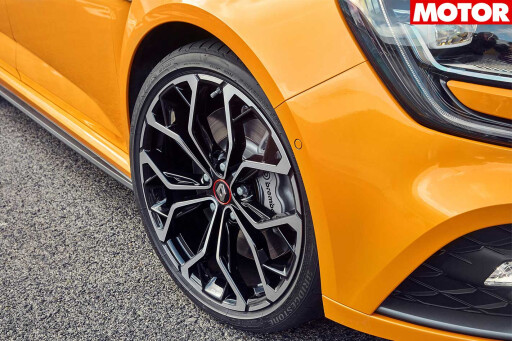 We probably wouldn’t have chosen a two-pedal Megane RS with Renault’s EDC transmission for our first taste of the car but, as it transpired, we hadn’t had access to one with a manual gearbox as these words were written, or one with Cup suspension, so impressions of those configurations will have to wait until later. At least it’s probably fair to suggest that if the Sport-level dual-clutch car hits the right notes on driver appeal, we can have plenty of reason for optimism about the stature of the other versions.
We probably wouldn’t have chosen a two-pedal Megane RS with Renault’s EDC transmission for our first taste of the car but, as it transpired, we hadn’t had access to one with a manual gearbox as these words were written, or one with Cup suspension, so impressions of those configurations will have to wait until later. At least it’s probably fair to suggest that if the Sport-level dual-clutch car hits the right notes on driver appeal, we can have plenty of reason for optimism about the stature of the other versions.
The current Megane’s cockpit makes for a decent departure point for a performance treatment, albeit one with some minor frustrations. The RS 280’s Alcantara sports seats are good and supportive, and the driving position they grant is also good by class standards. Thankfully you don’t sit uncomfortably high and the controls are well located in front of you.
 Renault Sport’s attempts at enriching the cabin materials are mixed, though. The RS’s red-striped seatbelts and red trim accents are bright and effective, but its part-Alcantara sport steering wheel has fairly ordinary-feeling leather where your hands rest on the grips (at quarter to three) and soft suede at six and 12 o’clock where you seem to touch it less.
Renault Sport’s attempts at enriching the cabin materials are mixed, though. The RS’s red-striped seatbelts and red trim accents are bright and effective, but its part-Alcantara sport steering wheel has fairly ordinary-feeling leather where your hands rest on the grips (at quarter to three) and soft suede at six and 12 o’clock where you seem to touch it less.
Equally odd are the part-analogue, part-digital instruments, which consist of a square digital screen made up mainly of differently themed analogue rev counters and a digital speedo, but whose available screen space is drastically curtailed by oversized analogue fuel level and water temperature gauges to either side of it.
One bigger screen, with temperature and fuel information you could call up when needed (or at least scale to your preference), would have been a much more intelligent layout. Details, perhaps.
 Still, they matter, especially since details also initially prevent you from enjoying this car’s driving experience as much as you might, at least until you become familiar with the task of driving around them. Chief among those are the positioning and action of the shift paddles for the Megane RS 280’s EDC gearbox. Oh dear, I know – same record.
Still, they matter, especially since details also initially prevent you from enjoying this car’s driving experience as much as you might, at least until you become familiar with the task of driving around them. Chief among those are the positioning and action of the shift paddles for the Megane RS 280’s EDC gearbox. Oh dear, I know – same record.
But having been criticised so strongly for the Clio RS 200’s flimsy-feeling paddles, it’s amazing that Renault Sport should have repeated almost exactly the same offence with that car’s new bigger brother.
The Megane’s shift paddles have better haptic feel than the Clio’s, to be fair, and the ‘crushed cornflake’ action is notable by its absence. But they remain awkwardly placed on the steering column (displaced upwards by Renault’s trusty old column-mounted audio remote control) so they’re a slight stretch for your fingertips every time you need to grab a gear.
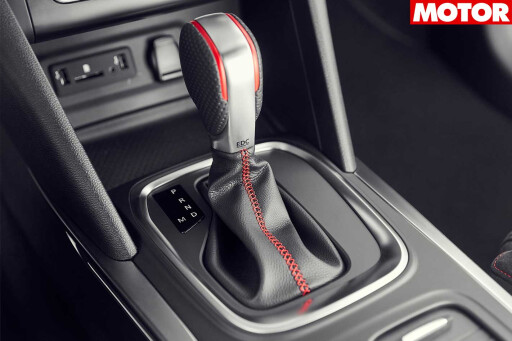 They also lack that solid, defined action that’d tell you beyond question when you’ve successfully selected the next gear. As they are, they feel light and woolly and it’s easy to half-pull one, then tug it again just to be sure, only to find you’ve accidentally upshifted twice.
They also lack that solid, defined action that’d tell you beyond question when you’ve successfully selected the next gear. As they are, they feel light and woolly and it’s easy to half-pull one, then tug it again just to be sure, only to find you’ve accidentally upshifted twice.
Renault’s EDC gearbox itself does a respectable job of managing the car’s gear ratios and gives you something more like that close control you want over the driving forces going into the front wheels than the Clio RS 200’s gearbox ever managed. It’s quicker on the upshift than on its way down, though, and nothing like as smooth or judicious with its shift timing in ‘D’ as the better ‘flappy-paddle’ hot hatches with which you might compare it.
 What about that critical new mechanical oily bit that gearbox is connected to – the engine? On this evidence, I’d say it’s strong enough; competitive with the prevailing standard for the average full-sized hot hatchback, certainly.
What about that critical new mechanical oily bit that gearbox is connected to – the engine? On this evidence, I’d say it’s strong enough; competitive with the prevailing standard for the average full-sized hot hatchback, certainly.
But as a replacement for the old Megane 275’s blown 2.0-litre engine, I’m not sure ‘better than average’ makes it worthy. Because although the Megane RS 280 has abundant real-world on-the-road performance, it’s not thanks to its engine.
The motor is torquey and free-ish revving, but also sounds a bit ordinary, suffers a little with iffy throttle response throughout the accelerator pedal travel and doesn’t breathe in and keep hauling with anything like the high-range urgency of a Civic Type R’s 2.0-litre. As hot-hatch engines go, it’s just all right.
 Now guess what’s better than all right? The Megane’s chassis. Actually, that’s an understatement – it’s sensational.
Now guess what’s better than all right? The Megane’s chassis. Actually, that’s an understatement – it’s sensational.
The car steers faithfully, with useful weight and plenty of feel. But the deftness, suppleness and fluency of its ride is outstanding on bumpy roads, and is somehow set off against first-rate, progressive body control in a combination that no rival hot hatchback could match, I’d wager.
Better still are the Megane RS 280’s true showstoppers: totally absorbing handling agility, brilliant cornering balance and a flair for playfulness that might even make a Type R seem straight-laced.
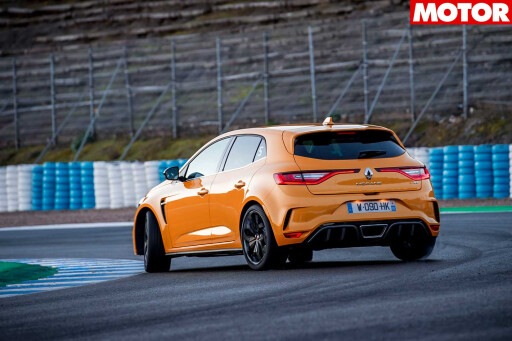 The Megane RS 280’s four-wheel steering system contributes tellingly to all three, and to greatest effect when you use Renault Sport’s Race driving mode, which raises the threshold speed at which it switches from steering against the front wheels to steering in the same direction as them.
The Megane RS 280’s four-wheel steering system contributes tellingly to all three, and to greatest effect when you use Renault Sport’s Race driving mode, which raises the threshold speed at which it switches from steering against the front wheels to steering in the same direction as them.
In most four-wheel-steered cars, this happens at around 50km/h. In the Megane RS 280 – and in Race mode, remember – you get a counter-steered rear axle all the way up to 100km/h. And so the car turns in with amazing alacrity and carries big mid-corner speed so effortlessly on a balanced throttle.
 On a trailing throttle, meanwhile, you’ll be amazed by how easily you can just flick it into delicious little neutral-steered drifts, the rear wheels effectively guiding the back of the car ever so delicately into the slide. It’s uncannily progressive. That’s an incredibly enlivening influence on the driving experience of a front-driven performance car at fairly low speeds, when the bends you’re tackling are tight, clear and well sighted.
On a trailing throttle, meanwhile, you’ll be amazed by how easily you can just flick it into delicious little neutral-steered drifts, the rear wheels effectively guiding the back of the car ever so delicately into the slide. It’s uncannily progressive. That’s an incredibly enlivening influence on the driving experience of a front-driven performance car at fairly low speeds, when the bends you’re tackling are tight, clear and well sighted.
Where does that leave the Megane RS 280? Pretty plainly, it’s staggeringly good in some ways, ‘all right’ in others – and not without the odd frustration, either.
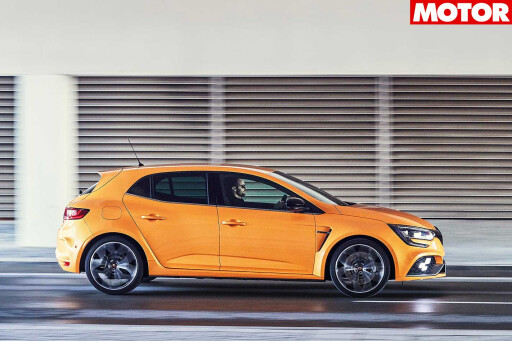 In this form, it wouldn’t cut it for me next to better, slicker and more complete dual-clutch options from the VW Group stable. But that’s not the end of the story. Because I’m not convinced this car has the engine it really deserves and the paddle-shift gearbox is an option you need not have.
In this form, it wouldn’t cut it for me next to better, slicker and more complete dual-clutch options from the VW Group stable. But that’s not the end of the story. Because I’m not convinced this car has the engine it really deserves and the paddle-shift gearbox is an option you need not have.
However, the handling could yet prove itself capable of hitting even greater heights in Cup specification than it has already in Sport trim. If it does, how much will a slightly ordinary engine and some curious fixtures and fittings really matter to a devoted petrolhead?
 Could this be yet another landmark new affordable performance car, set to cut short the Civic Type R’s reign as our hot hatchback champion? I’d suggest the possibility is very real indeed. Perhaps Renault Sport didn’t let all of its best engineers don those new-season Alpine polo shirts, after all.
Could this be yet another landmark new affordable performance car, set to cut short the Civic Type R’s reign as our hot hatchback champion? I’d suggest the possibility is very real indeed. Perhaps Renault Sport didn’t let all of its best engineers don those new-season Alpine polo shirts, after all.
Ride Control
Why the RS 280 spurns adaptive dampers
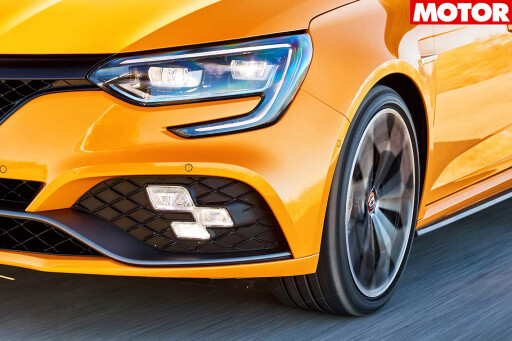 Renault Sport has been playing with hydraulic suspension bump stops since the 2005 Clio RS 182 Trophy. Having also looked at adaptive dampers, the Dieppe firm concluded it could achieve better dynamic performance by combining a well-tuned passive damper with a hydraulic bump stop – than by spending the equivalent on an adaptive damper.
Renault Sport has been playing with hydraulic suspension bump stops since the 2005 Clio RS 182 Trophy. Having also looked at adaptive dampers, the Dieppe firm concluded it could achieve better dynamic performance by combining a well-tuned passive damper with a hydraulic bump stop – than by spending the equivalent on an adaptive damper.
Described by Renault as “a damper within a damper”, they’re independent fluid-filled shock absorbers that sit on the lower end of the front and rear suspension struts. And while they’re commonly fitted to rally cars – and the new Megane uses them at all four corners – the Clio RS uses them on its front axle only.
Credible? Only because of Renault Sport’s chassis tuning pedigree.
2018 RENAULT MEGANE RS 280 SPECS:
Body: 5-door, 5-seat hatch
Drive: front-wheel
Engine: 1798cc inline 4, DOHC, 16v, turbo
Bore/Stroke: 79.7 x 90.1mm
Compression: N/A
Power: 205kW @ 6000rpm
Torque: 390Nm @ 2400-4800rpm
Power/Weight: 143kW/tonne
Transmission: 6-speed dual-clutch
Weight: 1430kg
Suspension: dual-axis MacPherson struts (f); torsion beam (r)
L/W/h: 4364/1875/1435mm
Wheelbase: 2669mm
Tracks: 1615/1596mm (f/r)
Steering: electronically assisted rack-and-pinion
Brakes: 355mm ventilated discs, 6-piston calipers (f); 290mm solid discs, single-piston calipers (r)
Wheels: 19.0-inch (f/r)
Tyre sizes: 245/35 R19 (f/r)
Tyre: Bridgestone Potenza
Price: $45,000-$55,000 (estimate)
LIKES: Chassis is a gem; ride quality; manual option
DISLIKES: EDC ’box and paddle placement; engine
RATING: 4 out of 5 stars

COMMENTS